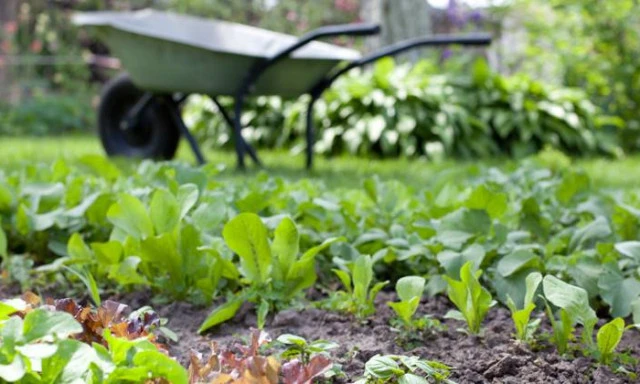Healthy soil contains myriads of bacteria, archaea, algae, fungi, invertebrates and other organisms. Your plants benefit from these, so here is how you can help them.
There are harmful pests and diseases that can be found in garden soils, but these harmful organisms are vastly outnumbered by organisms that are either harmless or beneficial to your plants. Promoting the ‘good’ organisms and the conditions that they prefer helps them out-compete the harmful organisms and reduce the risk of them causing disease or harm to your plants.
The benefits of soil organisms include:
- Mycorrhizae are fungi that form a symbiotic relationship with plants. The fungi grow their hyphal filaments around or into the roots of their host plants (rhizosphere). The fungi are better able to absorb nutrients and water from the soil and pass them on the roots. In return, the plants provide sugars to the fungi made by the plants’ photosynthesis.
- A range of different micro-organisms can fix nitrogen from the air and convert it to nitrate, nitrite, ammonia and other compounds that plants can use. The most well-known is the rhizobia bacteria in the root nodules of legumes.
- Soil micro-organisms, invertebrates and larger animals play the major part in re-cycling dead plant and animal material. The leaf litter, grass clippings, fallen branches, etc. decay through consumption by soil organisms. This digestion releases mineral nutrients and breaks down the larger organic (carbon-based) molecules such as lignin and cellulose, to smaller molecules. The smaller molecules can then be used by micro-organisms as a food source. This organic material is known as humus or humic substance and is very important for the condition of the soil.
Available water is the most important property of fertile soil. The most important effect of humic substances in the soil is their ability to hold water during periods of drought.
Soils with good crumb structure have more open spaces which allow for gaseous interchange with the atmosphere, and for greater water infiltration. Humic substances are key components of a loose crumb soil structure.
Humic substances in soils help neutralize the pH of those soils. Both acidic and alkaline soils are neutralized; moved towards pH neutral (7.0). - Invertebrates such as earthworms, insects and even burrowing animals help distribute the humus and nutrients deeper in the soil helping develop deep humus-rich topsoil. They also help aerate the soil keeping it suitable for aerobic organisms and easing plant root penetration.
- Carbon sequestration - Soils with greater amounts of soil life and humus contain larger amounts of carbon which has been sequestered from CO2 in the atmosphere, helping reduce this greenhouse gas in the atmosphere.
How to encourage the life in your soil:
- Keeping the soil covered with mulch, straw or leaf litter is the first step in promoting soil life. A living ground cover of plants is even better. Plants devote considerable energy to encouraging soil organisms by secreting sugars, vitamins and other organic compounds into the soil.
- Provide your soil with organic material on which the soil organisms can feed and break down to humus. This organic material can be in the form of compost, well-rotted manure, LawnPro D-Thatch or humates and humic acids.
- Ensure your soil is not compacted or water-logged. Such conditions will prevent gaseous circulation in the soil and may limit microorganisms to anaerobic varieties that are generally not of benefit and are often harmful.
- Ensure the pH of your soil is close to neutral. Soil of pH below 4.5 will not be suitable for earthworms and many other beneficial soil organisms, it also tends to encourage weeds.
- Most cultivated plants prefer a soil pH of about 6.0-7.0. In this rang,e most nutrients are available to the plants.
- Use reduced tillage or no-tillage to minimise destruction of soil organisms and habitat and reduce the rate of organic matter breakdown. Contrary to the ‘old school’ gardening practice of digging organic matter deep into soils, it is now considered best to apply the organic matter to the surface and let nature move the matter into the soil. Reduced disturbance allows the organisms to find their optimal depth naturally.
- Soil organisms need different plant types to maintain a healthy and diverse community. They are then better able to resist disease organisms, decompose residues, cycle nutrients and maintain their activity throughout the seasons. Consider introducing a legume species with its associated rhizobia bacteria in the root nodules to convert atmospheric nitrogen to soil fixed nitrogen.
- Use pesticides judiciously. Pesticides can be used to try and redress an imbalance caused by an opportunist pest or disease-causing organism and prevent harm to plants. If this happens it is important to identify what has caused the imbalance and correct it. A healthy soil biota is also better able to breakdown pesticides in the soil, preventing any harmful build-up.
- Kiwicare fertilisers including Gro-Sure Planting Magic and LawnPro Lawn Thickener contain added humate and humic acids to promote healthy soil micro-organisms.
Learn more about what is in your soil.
David Brittain
Kiwicare


